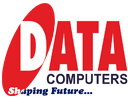About C Programming
C programming language is a high-level programming language that is extensively used for developing system software, application software, and embedded systems. It was developed by Dennis Ritchie at Bell Labs in the early 1970s as a system programming language to enhance the UNIX operating system. C language is a structured language that supports both procedural and object-oriented programming paradigms. C programming language is portable and highly efficient, making it one of the most widely used programming languages in the world.
History:
C programming language was developed by Dennis Ritchie at Bell Labs in the early 1970s. At the time, the UNIX operating system was being developed in assembly language, which was highly inefficient and difficult to maintain. Ritchie saw the need for a higher-level language that could be used to develop the UNIX operating system. He began developing a language that was based on the B programming language, which was developed by Ken Thompson at Bell Labs. The language was initially called “New B,” but it was later renamed “C” in 1972.
C language was first used for developing the UNIX operating system in 1973. It quickly gained popularity among system programmers due to its low-level features and efficient memory management capabilities. C language was later standardized by the American National Standards Institute (ANSI) in 1989, and the International Organization for Standardization (ISO) in 1990. The standardization of the language made it more portable and easier to maintain.
Features of C programming language:
Procedural Programming: C programming language supports procedural programming, which is a programming paradigm that focuses on the procedures or functions that perform specific tasks. Procedural programming is easy to understand and maintain, making it a popular programming paradigm.
Portability: C programming language is highly portable, which means that programs written in C can be compiled and run on different platforms without any modifications.
Low-level Programming: C programming language provides low-level programming features, such as direct memory access and pointer manipulation. These features make it possible to write programs that interact directly with hardware.
High-level Programming: C programming language also provides high-level programming features, such as arrays, structures, and functions. These features make it possible to write complex programs using a modular approach.
Efficiency: C programming language is highly efficient, which means that programs written in C can execute quickly and use minimal system resources.
Access to System Resources: C programming language provides a large standard library that contains functions for performing common tasks, such as input/output, string manipulation, and mathematical calculations.
Applications of C programming language:
System Software: C programming language is widely used for developing system software, such as operating systems, device drivers, and firmware. C programming language’s low-level features make it suitable for developing software that interacts directly with hardware.
Application Software: C programming language is also used for developing application software, such as database management systems, web browsers, and text editors. C programming language’s efficiency and portability make it suitable for developing applications that require fast execution and can run on different platforms.
Embedded Systems: C programming language is extensively used for developing embedded systems, such as microcontrollers and sensors. C programming language’s low-level features make it suitable for developing software that interacts directly with hardware in real-time.
Gaming: C programming language is also used for developing video games. C programming language’s efficiency and low-level features make it suitable for developing games that require fast execution and high-performance graphics.
Networking: C programming language is used for developing networking software, such as TCP/IP protocols and socket programming. C programming language’s low-level features make it suitable for developing software that interacts directly with network interfaces.
Course Content
- What is Procedure Oriented Programming Language
- Tokens
- Operators
- If Statement
- Loops
- Introduction to arrays
- Pointer
- Strings (derived data type)
- User defined functions
- Storage Classes
- Dynamic memory allocation(malloc and calloc)
- File Handling
- Error Handling
- Pointers and Arrays
- Function Pointers
- Stack Operation
- Queue Operation
- Linked List
- Tress and non-linear Data Structure
- Searching Algorithms
- Sorting Algorithms











